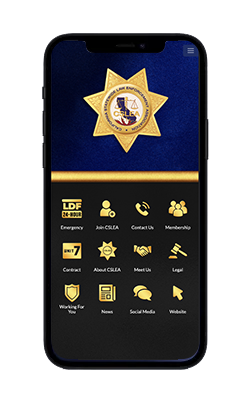Coalinga, CA – On Sunday, June 2, hospital police officers at Coalinga State Hospital arrested two heavily armed suspects involved in a domestic violence situation. The sworn officers are not allowed to carry firearms on duty yet they were dispatched to a call in which they encountered a loaded shotgun, two loaded handguns, nearly 200 rounds of ammunition and more than a dozen bladed weapons.
“This situation could have gone south very quickly,” said Alan Barcelona, president of the California Statewide Law Enforcement Association (CSLEA). CSLEA represents state hospital police officers as well as 7,000 other public safety and consumer protection professionals who work for the state of California. “The sworn peace officers who responded to this domestic violence call came into contact with a couple who had more than a dozen lethal weapons in their vehicle, our officers had none. By department policy, these sworn officers are not allowed to carry a firearm.”
On Sunday afternoon, Coalinga State Hospital police officers were dispatched to the domestic violence situation in the East parking lot of the hospital after a hospital staff member reported the situation. The two suspects, a man and a woman, drove to Coalinga State Hospital under the impression the hospital was open to the general public and they could seek medical treatment. The domestic violence situation became even more dangerous when officers found loaded firearms, ammunition and knives in the vehicle.
The officers arrested Amy Marie Wells, 36 and Christopher Ryan Wells, 30, on weapons charges. Amy Wells was also arrested on a domestic violence charge.
“Our sworn peace officers at state hospitals wear police uniforms with police badges, wear ballistic vests, drive marked police cars equipped with emergency response lights and sirens and they carry a baton and pepper spray. They are sworn peace officers who make traffic stops, respond to crimes in progress and transport violent offenders. So why don’t these state hospital police officers carry a firearm while on duty? It’s industry standard safety equipment,” said Barcelona. “When I explain this to people, I see the look on their face, they’re thinking, the same thing you’re thinking, it makes common and life-saving sense for these officers to carry a firearm on their duty belts.”
“I commend these officers for staying safe during a very dangerous situation,” said Luis Jimenez, president of the Hospital Police Association of California (HPAC). “Our fear, as unarmed police officers at state hospitals, is that someone is going to die or be seriously injured before the department of state hospitals seriously considers arming their officers.”




